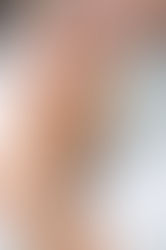Tea Tree Oil For Acne
- skincare81
- Jul 21, 2018
- 3 min read
Tea tree oil is an essential oil that is extracted from the leaves of Melaleuca alternifolia, a small tree native to Australia.
It is well known for its ability to fight bacteria and reduce skin inflammation without costly acne medication.
What's more, several studies show that applying 5% tea tree oil for acne to the skin effectively reduces it.
When compared to 5% benzoyl peroxide, 5% tea tree oil did not act as quickly, but it did significantly improve acne after three months of use.
It also resulted in fewer adverse effects like dryness, irritation and burning, compared to benzoyl peroxide.
Tea tree oil is very potent, so always dilute it before applying it to your skin.
How to Use It
Mix 1 part tea tree oil with 9 parts water. Dip a cotton swab into the mixture and apply it to affected areas. Apply moisturizer if desired. Repeat this process 1–2 times per day, as needed.
Summary:
Tea tree oil has strong anti-bacterial and anti-inflammatory properties.
Applying it to the skin has been shown to reduce acne.
Green tea is very high in antioxidants, and drinking it can promote good health.
There aren't any studies exploring the benefits of drinking green tea when it comes to acne, but applying it directly to the skin has been shown to help.
This is likely because the flavonoids and tannins in green tea are known to help fight bacteria and reduce inflammation, which are two main causes of acne.
The major antioxidant in green tea — epigallocatechin-3-gallate (EGCG) — has been shown to reduce sebum production, fight inflammation and inhibit the growth of P. acnes in individuals with acne-prone skin. Multiple studies have shown that applying a 2–3% green tea extract to the skin significantly reduces sebum production and pimples in those with acne. You can buy creams and lotions that contain green tea, but it is just as easy to make your own mixture at home.
How to Use It
Steep green tea in boiling water for 3–4 minutes. Allow tea to cool. Using a cotton ball, apply tea to skin or pour into a spray bottle to spritz on. Allow to dry, then rinse with water and pat dry.
You can also add the remaining tea leaves to honey and make a mask.
Even though there isn't any evidence that drinking green tea can fight acne, some research suggests it may still be beneficial.
For example, drinking green tea has been shown to lower blood sugar and insulin levels, which are factors that can contribute to the development of acne (37).
Summary:
Green tea is high in antioxidants that help fight bacteria and reduce inflammation. Applying green tea to the skin has been shown to significantly reduce acne.
Treating Acne with Benzoyl Peroxide
Benzoyl peroxide has been used as an acne treatment for many years and one of the better supplements for clear skin. It is still effective. There are newer treatments, but none have proven to be any more effective than or as safe as benzoyl peroxide. This has been a proven acne medication for many. Also one of the best supplements for acne.
Benzoyl peroxide is used to treat acne in teenagers and young adults. The treatment itself is completely painless. In the aftermath of a benzoyl peroxide treatment, the patient can expect some minor discomfort. The treated skin gets very dry, red, and itchy. It peels off much like skin that has been exposed to sunlight overly long.
When benzoyl peroxide is applied to the skin, there is a chemical reaction between the benzoyl peroxide and the oxygen in the air that creates benzoic acid. The benzoic acid removes the top layer of skin. After a benzoyl peroxide treatment, the skin is much more susceptible to sunburn, and dermatologists recommend that their patients avoid direct sunlight altogether.
OXY, NeoBenz Micro, Basiron, Brevoxyl, Stioxyl, and Panoxyl are some of the names that benzoyl peroxide is sold under.
Benzoyl peroxide treatments are applied by the patient in his own home. The treatment most often recommended is to apply benzoyl peroxide twice a day, morning and evening.
The face must be thoroughly cleaned and patted dry before the benzoyl peroxide is applied. A 15-minute wait period between cleaning the skin and applying the benzoyl peroxide is recommended, and it is also recommended that the patient apply a moisturizer that has an SPF (Sun Protection Factor) of at least 30.
Patients definitely want to avoid direct sunlight because a sunburn would be much more serious after using benzoyl peroxide.
The dryness, redness, and itchiness after using benzoyl peroxide are the only known side effects, and they are certainly manageable.
****Results May Vary Depending On Skin Type etc. For Some More Advanced Cases of Acne- Please Consult a Physician Or Dermatologist.








Comments